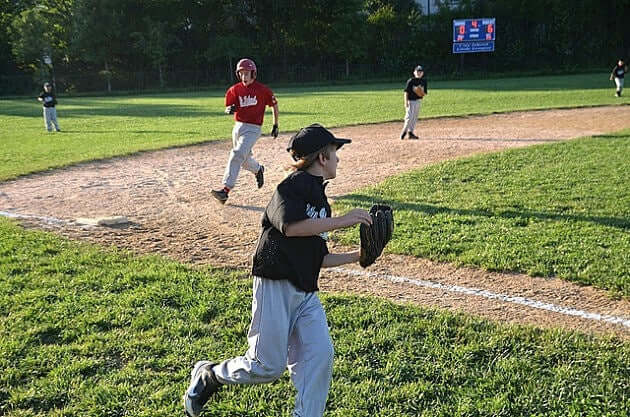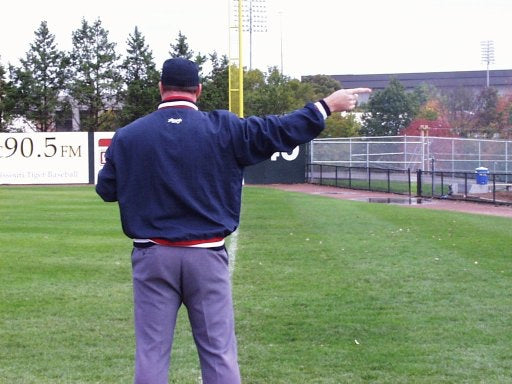Here is a game we try and end every practice with. It works really well for ages 11-16 or so. After you've done your drills, try and leave about 20 minutes to end the day with this game. The kids really seem to love it and they stay engaged. They look forward to this game and enjoy competing with their team members. Here is what we do.
- Divide the team up into three to four groups. So if you have 12 on your team, make three teams of 4 or four teams of 3. If you have more players, you can go to four or five teams, but it's best to have between 3 and 4 players on a team. This way, most of the time everyone on a team gets to bat. Try and randomize from practice to practice so the same kids are not on the same teams each time.
- The coach is the pitcher.
- Team 1 bats first. The rest are in the infield and outfield. Most of the time we put team 2 in the infield, and team 3 in the outfield.
- Each batter starts with a strike 1 count and gets three pitches. If they are younger, and more at the beginner stage you can give them 5 pitches. After the pitches and no hit, the batter is out, even if the last pitch is a foul ball. There are no walks. And no bunting.
- If the coach is a lousy pitcher, try someone else or make adjustments to the number of pitches. But keep it a small number. The point is to get as many batters through as possible. The batters should be aggressive at the plate as they have a limited number of pitches.
- If they hit the ball they run. Most of the regular rules apply. A throw to first to retire the batter or a caught fly ball is an out. If not the batter/runner keeps running the bases and does not stop running until the ball reaches the bag in front of him/her where a defensive player has the ball in hand and foot on the bag. If the defense tags the runner while running to the next bag, then the runner is out. The offensive team gets the number of points for the bases already touched. Normally, the defense throws the ball to the base to which the runner is going or if they don't think they can get the ball there in time, then to the next base. So the defense learns to get the ball in front of the runner. The team at bat gets the number of points for each base. So if the first batter gets to second base before the ball does, they get 2 points. The runners do not stay on base. They come back to hit some more. For each batter the bases are always empty. As an example, if team 1 gets a single, a double, and a home run (possibly due to errors), they accumulate a total of 7 points for that inning.
- When the defense gets three outs, team 2 is up to bat. Team 1 goes to the outfield, team 3 moves to the infield. Team 2 starts batting and you're back to #3 above.
- We try to ensure there is time enough that each team gets to bat at least once. Depending on the skill level, they may get two innings in for the game.
- If your team is pretty good offensively, you can start each inning with one out. Try it and see how to adjust so your team gets to play about two innings per game.
It's a simple competitive game that teaches the kids to get the ball in front of the runner. The kids like the competition as do the parents watching. They even have some fun with bragging rights for that day. Just about every practice we were asked if we were going to play the game. Of course, a lot of times they would rather play the game than the drills we had for them.
Hope you enjoy the idea. Have some fun with it. Let us know of interesting drills you use for your practices that keep the kids engaged and active throughout the practice.




Leave a comment
All comments are moderated before being published.
This site is protected by hCaptcha and the hCaptcha Privacy Policy and Terms of Service apply.